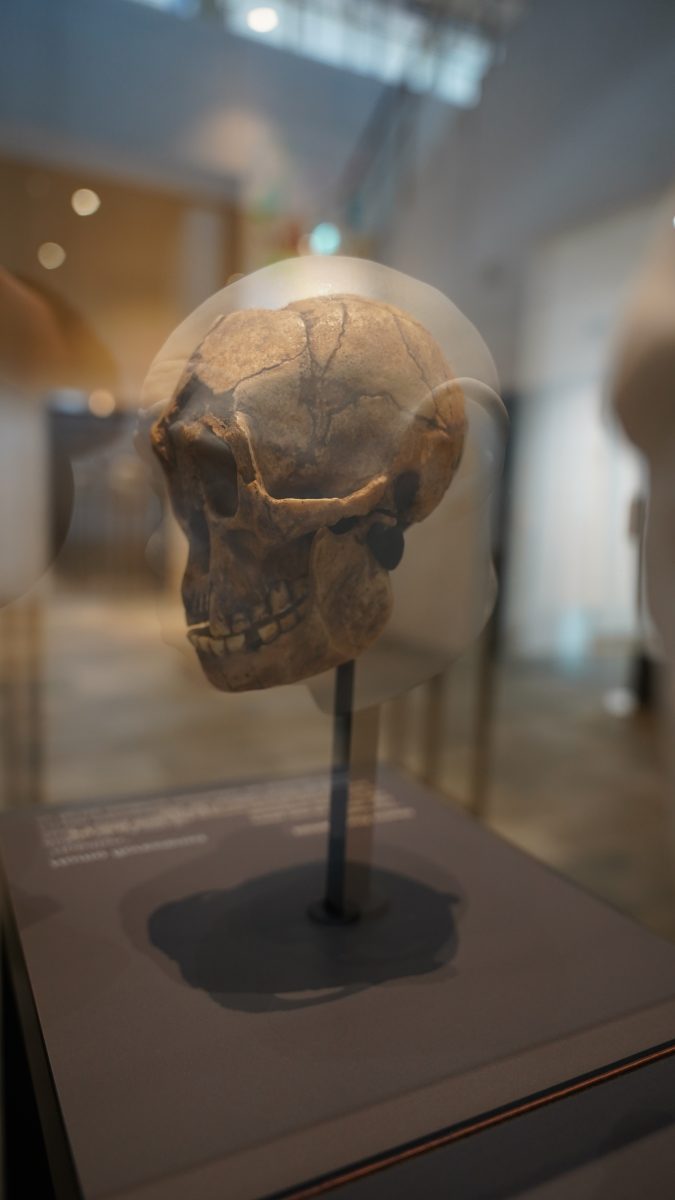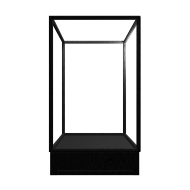Aarhus, Denmark. Visited August, 2021.
While searching for examples of contemporary habitat dioramas, I stumbled upon a video of Art+Com studios (Berlin, Germany). The two minute single shot animation shows an Australopithecus Sebida in her historical natural environment.
It turned out the video was made as a stereoscopic film for a viewer at the Danish Moesgaard Museum, which his connected to the archaeology department of Aarhus University. The Museum houses a considerable and well preserved Prehistoric collection, notably from the Danish isles.
Moesgaard opened in 2014, and incorporated all kinds of digital displays in its exhibitions. In some cases the scenography seemed to distract a bit from the actual content, but in other’s, the dioramic inventions were quite inventive.
The Evolution Stairway
Although there may be some issues ( 1 ) with the way the evolution stairway is presented, from a display point-of-view this was a beautiful combination of scientific modeling (by twin brothers Kennis & Kennis) ( 2 )and a digital stereoscopic experience.
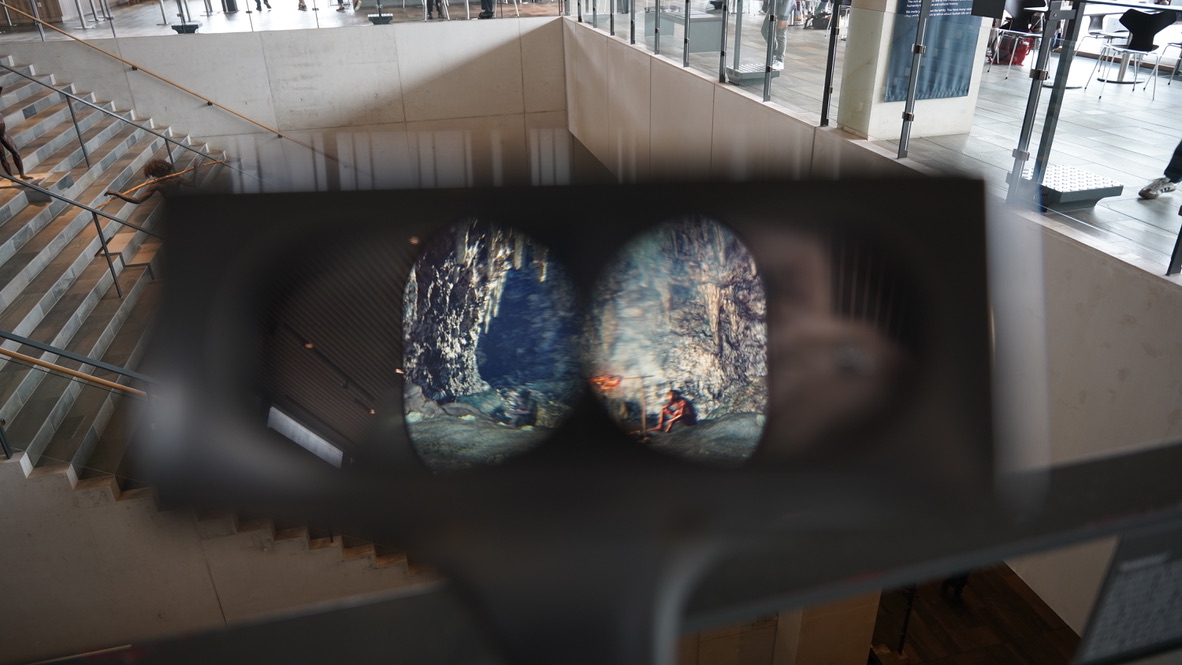
( 1 ) Museum narratives are not neutral by Dolly Jørgensen, New Natures, Sept 29, 2018
( 2 ) The Kennis & Kennis reconstructions of (pre-)historic figures always seem to depict their subjects on the happiest day of their lives.
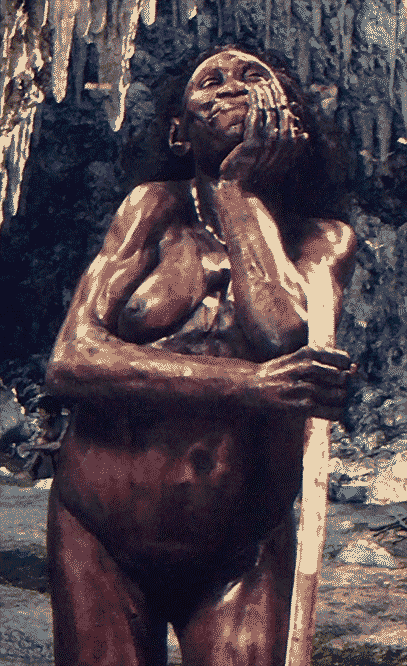
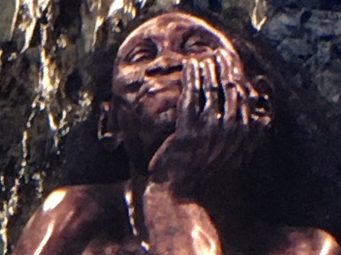
Seven 2 minute animations transport the visitor from the concrete stairway in the center of modern building to seven different locations in time. 3D-scans of the physical reconstructions are centered, while the virtual camera circles around them. The films are loops, but cut off at the beginning and the end, where there’s a transitional scene from the stairs to the landscape setting.
The viewer can control a little bit of the experience by turning a wheel on the viewer – but this does nothing more than play the video either forward or in reverse.
The scene is not a veritable immersive VR experience; the metal viewers are static and looking through them does not totally isolate the visitor from their surroundings. It is, however, a really nice animated update of a 19th century stereographic experience. Even the colors have a vintage 1950s, 1960s stereo slides feel to them.
The seven viewers are placed on the balcony around the stairs, each pointing at another human ancestor or relative. Because the viewers themselves are grey and quite inconspicuous, many visitors seem to overlook them entirely.
Other diorama’esques

The sequence above is based on a 5 minute ‘show’, accompanied by somber narration. It describes a year in a Prehistoric life, and it was a pretty well done combination of theatrical diorama tradition and science.
I’ve filmed a couple of other inventive presentations (making use of a modest type of projection mapping), but it turned out the LED lamps used caused the footage to induce a headache because of the resulting flicker. Instead, I’ll describe them below:
Island.
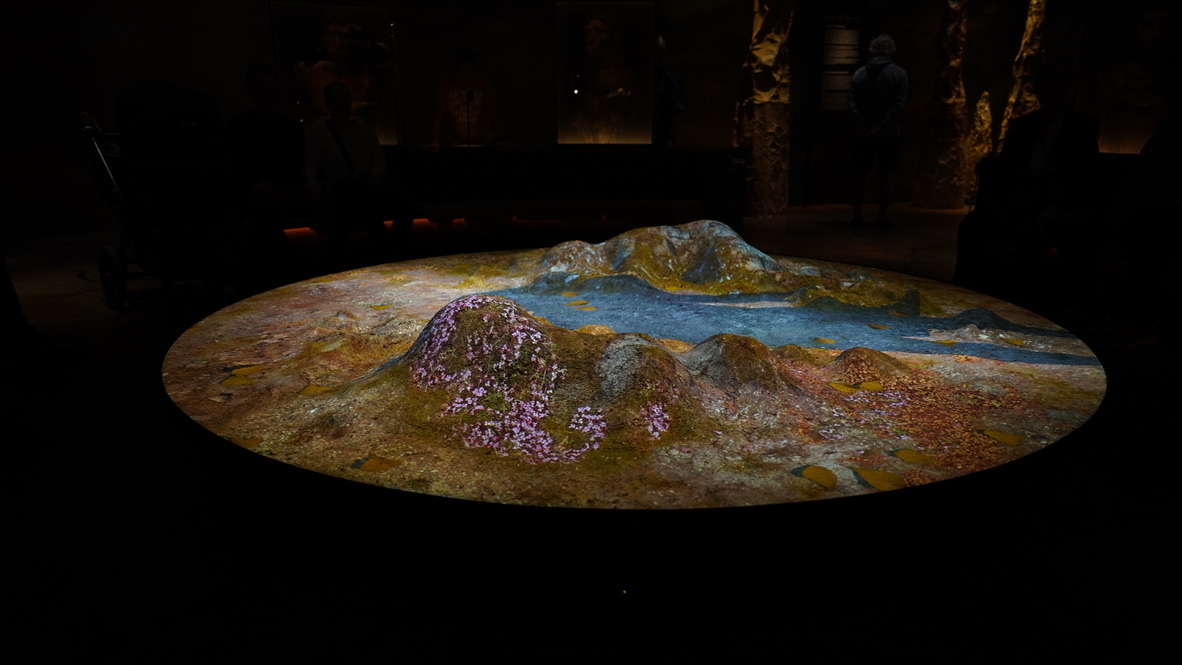
A circular relief, projection from above.
The voiceover spoke Danish, so I’m not entirely sure what the narrative was, but life-sized footsteps appeared as a track in sand, which then transformed in a small stream with rocks and foliage, which then transformed in an island – meaning the scale moved from life-sized to miniature, or our perspective shifted from frog to bird.
Holochurch.
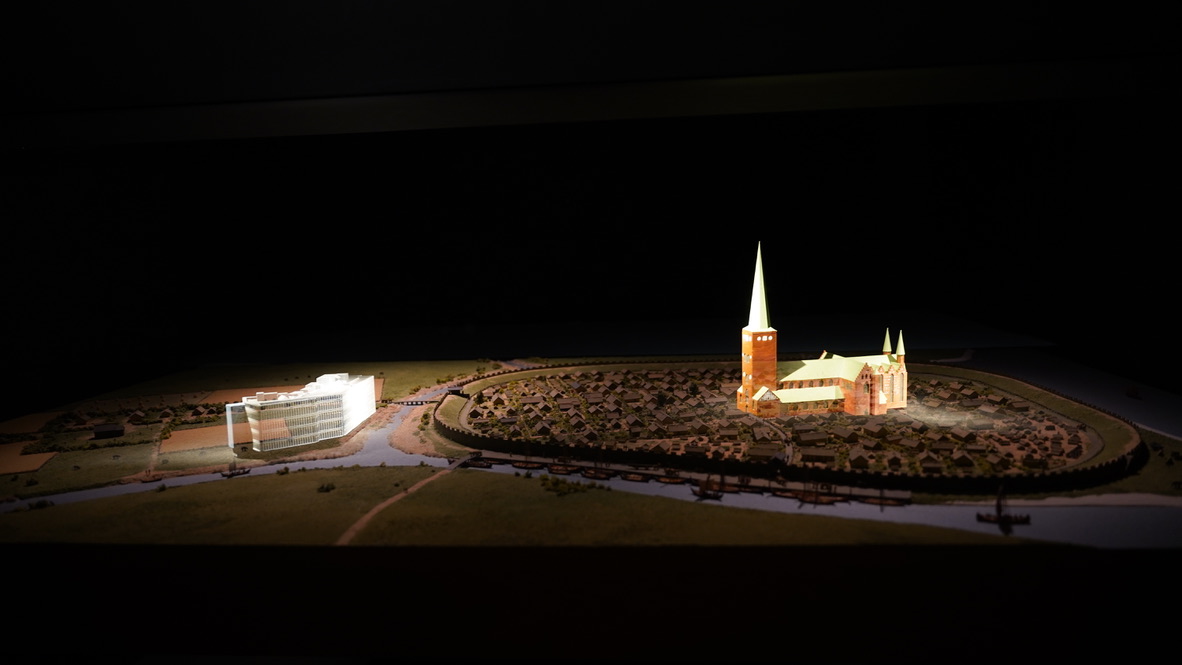
Over a miniature model of a town, a church and a modern building appeared and disappeared in dissolve-like intervals.
This is a classic ‘Pepper’s Ghost‘, using a reflection in a glass pane to achieve a holographic effect.
See-through heads.
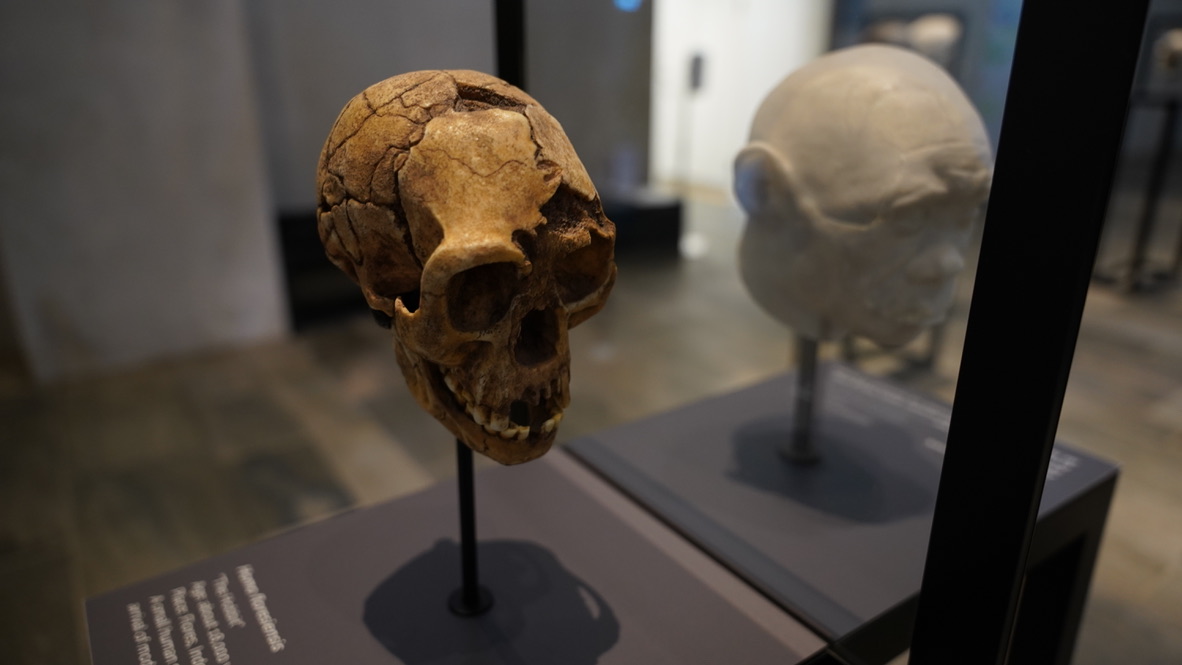
This display is related to ‘Pepper’s Ghost’: it uses a semi-reflective glass mirror to achieve a ‘double exposure’ image of a skull and its reconstructed fleshy head.
